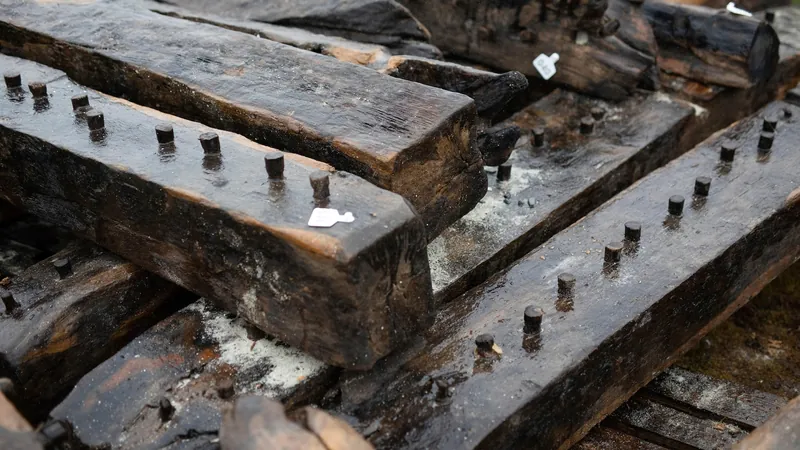
Ancient Shipwreck Unearthed on Scottish Island: A Glimpse into Maritime History
2025-07-23
Author: Lok
A Stunning Discovery on Scotland's Shores
A chance encounter by a schoolboy jogging through the dunes of a secluded Scottish beach has led to an astonishing archaeological find. The boy stumbled upon the skeletal remains of a wooden ship, igniting a passionate quest for its historical significance involving local historians, scientists, and archaeologists.
Unveiling the Mystery of the Earl of Chatham
In a groundbreaking announcement, researchers have revealed that the ship is believed to be the Earl of Chatham, an 18th-century warship renowned for its role in the American War of Independence and its later transformation into a whaling vessel in Arctic waters. Ben Saunders, a senior marine archaeologist, describes the ship as "lucky" despite its wreckage, thanks to the community spirit that fueled its rediscovery.
Community Spirit Shines Through
Discovered in February 2024 after a storm stripped away sand from the wreck on Sanday, one of the rugged Orkney Islands, the find sparked excitement among the island’s tight-knit population of just 500, a community with a rich maritime history filled with over 270 recorded shipwrecks dating back to the 15th century. Local farmers even mobilized their tractors to haul the 12 tons of oak timbers, leading to a collaborative effort to uncover the ship’s past.
Decoding the Ship's Legacy
Utilizing dendrochronology, scientists dated the wood to the mid-18th century from southern England. This fortunate break allows researchers to navigate historical archives and trace the lineage of the vessel, ruling out other potential wrecks until narrowing it down to the Earl of Chatham. Previously known as HMS Hind, this 24-gun frigate played pivotal roles in British military history, including significant engagements during the expansion of the British Empire.
From Warship to Whaler: A Unique Journey
After serving in critical campaigns against France and escorting convoys during the American Revolutionary War, the ship was sold in 1784, rebranded, and took on the perilous life of a whaling vessel in the Arctic. Whale oil, a crucial resource for the Industrial Revolution, was on the horizon, and the Earl of Chatham was among 120 other ships hunting for these leviathans. In a twist of fate, the ship met its end in a storm just after setting out for a whaling expedition off Sanday, though all 56 crew members managed to survive.
Preserving a Piece of the Past
The ship's timbers are now being preserved in a freshwater tank at the Sanday Heritage Centre while discussions ensue about creating a permanent display. Saunders is proud of how the community has engaged with the project, emphasizing their desire to unearth and cherish this maritime connection. As climate change leads to shifting coastlines, the discovery of long-buried wrecks may become more frequent, providing invaluable insights into the island's rich history.
A Testament to Heritage and Community
This remarkable find is not only a window into the past but also serves to reinforce Sanday's maritime identity. Community researcher Ruth Peace reflected on the project, stating, "The past is constantly intertwined with the present, either visible or hidden beneath the surface." This shipwreck is a link to a story that continues to breathe life into the island’s legacy.

 Brasil (PT)
Brasil (PT)
 Canada (EN)
Canada (EN)
 Chile (ES)
Chile (ES)
 Česko (CS)
Česko (CS)
 대한민국 (KO)
대한민국 (KO)
 España (ES)
España (ES)
 France (FR)
France (FR)
 Hong Kong (EN)
Hong Kong (EN)
 Italia (IT)
Italia (IT)
 日本 (JA)
日本 (JA)
 Magyarország (HU)
Magyarország (HU)
 Norge (NO)
Norge (NO)
 Polska (PL)
Polska (PL)
 Schweiz (DE)
Schweiz (DE)
 Singapore (EN)
Singapore (EN)
 Sverige (SV)
Sverige (SV)
 Suomi (FI)
Suomi (FI)
 Türkiye (TR)
Türkiye (TR)
 الإمارات العربية المتحدة (AR)
الإمارات العربية المتحدة (AR)